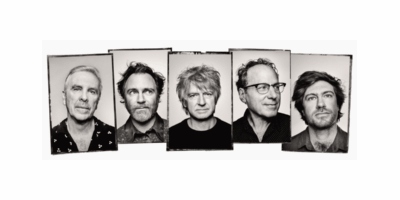If it’s too loud you’re too old.
It’s an adage that’s been around as long as kids have rocked out. But the cliched complaints from oldies that ‘it’s too darn loud!’ now actually have a solid scientific leg to stand on with new information showing that music has indeed gotten louder over the years.
Machines that have been listening to over 65 years worth of tunes have shown that complaints that modern music has become a noisy racket and designed to be louder over time are in fact accurate, thanks to the research of start-up company, The Echo Nest.
The Massachusetts “music intelligence” group builds music recommendation engines for popular music streaming services like Spotify, Rdio, and MOG. The Echo Nest uses technology that mechanically ‘listens’ to music and analyses it for similar patterns, then linking that raw data to human-constructed opinions (blogs, reviews, etc.) to generate their recommendations.
In a recent study, The Echo Nest reveals that in analysing the top 5,000 songs since 1950, the average volume of popular music has steadily climbed. But more interesting is that it was on a slow incline, until about 1990, when the average volume suddenly leaped, increasing by around 39% in just 20 years.
(Image: Loudness average over time. Source: The Echo Nest)
The ‘loudness’ of a song doesn’t actually refer to its volume, but in fact the dynamic range of a recording – meaning, the difference between the quietest part of a song and the loudest. Every media format – from mp3 to vinyl – has a limit to the maximum volume it can be, which is not growing, but instead its the softest parts that are getting louder, shrinking the gap in the dynamic range over the decades.
Love Music?
Get your daily dose of metal, rock, indie, pop, and everything else in between.
Essentially, older recordings of the 50s and 60s had greater dynamic range between their softest and loudest points, whereas from the spike in the 90s, it becomes less distinguished and more easily achieved thanks to technology. Don’t believe it? Try spinning a single by Elvis or Miles Davis and then compare it to the likes of 90s band like Oasis or Nirvana.
This phenomenon is known as ‘The Loudness War‘, which is the negative effect of mastering recordings where everything is at a ‘loud’ peak, meaning the sound quality suffers.
As The Echo Nest write in their research, “critics of the trend complain that listening to a bunch of super-loud, dynamically compressed music in a row can lead to hearing fatigue, and that compressing the instant-by-instant volume variations of music into such a flat, tight band erodes music’s complexity and subtlety.” A worrying concern for audiophiles and “as our chart shows,” reasons The Echo Nest’s researchers, “‘The Loudness War’… is real.”
It’s too easy to simply blame the producers, mixers, and audio crew that spin their magic on recordings for flattening out the dynamic range for the sake of ‘loudness’, after all, they’re responding to what artists (their labels) and listeners want (or at least think they want).
The act of compressing the dynamic range of a song to give the impression of it being ‘louder’, does help give a song an ‘oomph’ that is often lacking on subtler mediums. Which is obviously why pop music and the rise of the compressed mp3 format has helped speed things up in the 90s as the development of manufacturing and recording techniques increased.
Does that mean that music is getting worse? Well, that’s subjective. Music isn’t getting louder in the way that it can risk damaging your hearing, but it is – by audiophile terms – getting less complex, less subtle, and losing its nuances over time. But then again, modern day pop stars aren’t exactly aiming to be subtle. (*cough* Miley Cyrus *cough*)


































